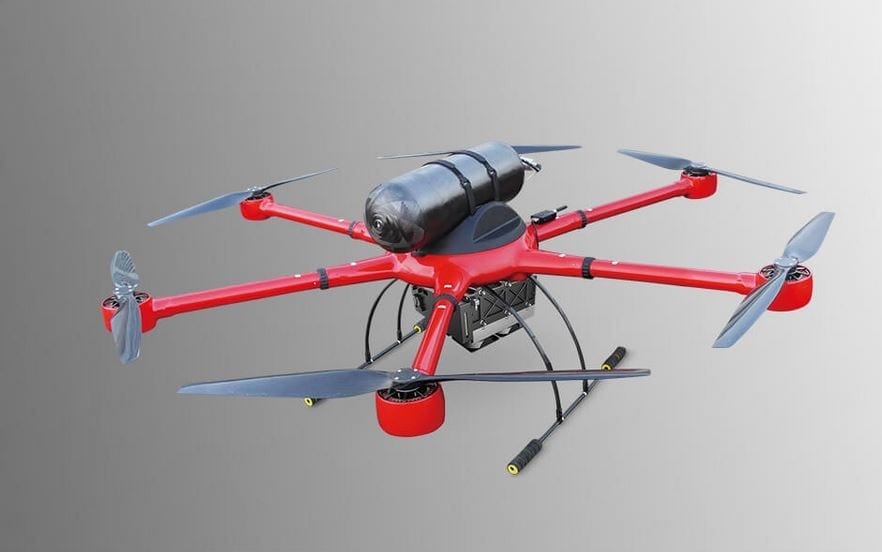
News
Review of Hydrogen Storage in Fuel Cell Propulsion Systems of Small Drones
Also known as unmanned aerial vehicles (UAVs), drones are one of the most popular units in aircraft right now, growing up in terms of popularity and using electric engines for their drive. Nowadays, the contemporary manufactured small drones are using mostly electric engines for their drive.
The two methods which are used to store energy for suitable purposes (batteries and fuel cells) are both efficient. However, according to one author named J. Dutczak and a paper that he submitted at the Faculty of Mechanical Engineering Kraków University of Technology, PL – the fuel cells system (which is still in its experimental phase) offers many promising benefits and use cases.
In the article paper, the author reviews the compressed hydrogen storage in contemporary fuel cell propulsion systems of small drones, reviewing the systems with compressed hydrogen storage and their on-board production.
Increasing The Flight Time As The Main Challenge That Fuel Cells Need To Solve
Dutczak is pointing to fuel cells as a revolutionary way that can increase the flight time – however, only when they are used with a combination of batteries as gasoline-electric drives in hybrid systems. The main issues right now remains to be the use of hydrogen as the “fuel” which is carefully reviewed in this paper.
When reviewing the potential fuel cell models, the author points out to the Jupiter-H2 UAV manufactured by the California-based company named FlightWave Aerospace Systems Inc.

Hydrogen-Powered Jupiter-H2 UAV
The author fully reviews this fuel cell model and its benefits:
“Propulsion of this UAV consists of eight motors (double system) driving blades of ducted fans. Compressed hydrogen tank of capacity of three-litres enables up to two hours of continuous flight. The new fuel cell module AC64 650W (described further) elaborated by Intelligent Energy firm works on hydrogen and ambient air. The “exhaust” emission consists only of a small amount of clear water vapour and hence is pollution-free. The two hours of flight time varies with the payload (max. 1.25 kg). Reduction of overall weight of Jupiter-H2 is possible thanks to absence of batteries, because the driving system can be fed directly from the fuel cells. The dimensions of this UAV are approximately 0.8 m x 0.6 m (height x width) together with optional equipment (sensors and cameras) mounted with use of universal mount system [5]. Refuelling of compressed hydrogen tank is very quick in comparison to the required time of battery charging.“
Aside from this model, Dutczak also reviews a model by Sparkle Tech Ltd. – the Eagle Plus – VTOL which is designed as a new drone concept which is joined to the high efficiency flight or fixed wing arrangements, and is driven by a 500W electric (main) engine fed from a hydrogen fuel cell. The other drne systems reviewed in the paper include the MMC Micro Copter Aero Technology Co. LTD, MMC’s HyDrone 1550, MMC’s HyDrone 1800, MMC’s Skypatrol 2700 VTOL and a few other models.

Eagle Plus VTOL manufactured by Sparkle Tech: left – general view, right — hydrogen tank compartment
Most of the drones examined in this article paper have similar specifications, but are very different in terms of their potential use cases, according to Dutczak.

Hycopter prototype designed by HUS Unmanned Systems — left,
Hycopter 1- the actual version
— right
Not Sufficient Endurance – The Main Issue All Fuel Cell Propulsion-Based Drones Are Suffering From
Generally, the findings of the author relate to the use of fuel cells and hydrogen technology. While gathering up all the models that use these systems, Dutczak found that small UAVs have many advantageous features which make them useful in different areas of commercial and military areas.
Obviously, each of these fuel cell propulsion-based drones can have potential use cases for specific segments or niches. In general, they are all suitable for different scenarios but also suffer from one major drawback – the insufficiency when it comes to their endurance.
In other words, the energy for the drone propulsion stored in batteries or fuel cells gives them relatively short flight time after fueling, which is why there is an ongoing research to elaborate the effective and light sources of energy for their propulsion.
To sum things up, one of the most impressive developments in this field, according to the author, is the new idea of one-use energy systems which could help even the smallest drones to fly in repeated intervals and be more efficient in terms of their flight times.
Citation: Compressed hydrogen storage in contemporary fuel cell propulsion systems of small drones, J Dutczak, IOP Conference Series: Materials Science and Engineering, Volume 421, Combustion engines and emission, http://iopscience.iop.org/article/10.1088/1757-899X/421/4/042013/meta


















